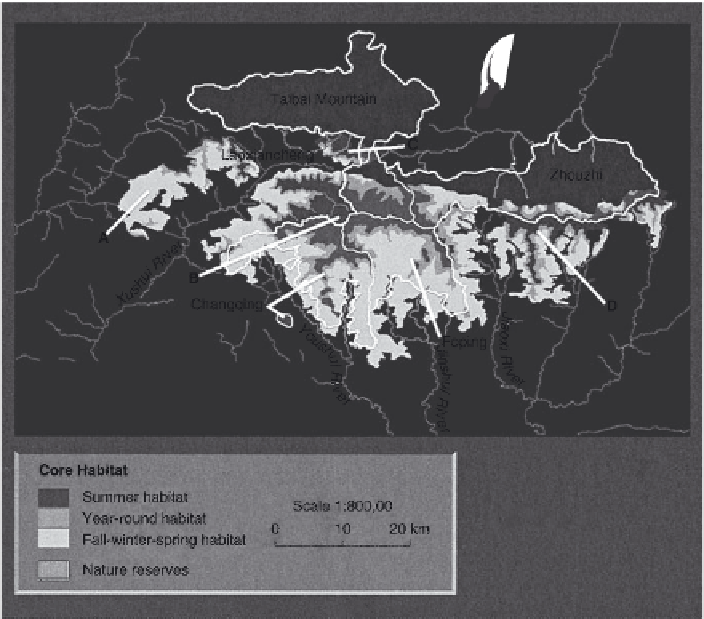Environmental Engineering Reference
In-Depth Information
imagery and fi eld work to identify a landscape to meet the long-term needs of the
species. The protocol for selecting potential habitat fi rst excluded areas lacking giant
pandas, forest block areas that were smaller than 30 km
2
(t he m i nimum area needed
to support a pair of giant pandas over the short term), forest with roads or settle-
ments, and plantation forests. Figure 4.2 maps summer habitat (1900-3000 m;
F.
spathacea
present), autumn/winter/spring habitat (1400-2100 m;
B. fargesii
present)
and a small amount of year-round habitat (1900-2100 m, both bamboo species
present) and identifi es four areas of 'core' panda habitat (A-D) that provide for the
migrational needs of the pandas.
Superimposed on Figure 4.2 are the nature reserves that existed at the time of
this study; disturbingly, they covered only 45% of the core habitat. Loucks et al.
(2003) recommended that their four core habitat areas should be incorporated into
a reserve network. They also noted the importance of promoting linkage between
the zones, because extinction in any one area (and in all combined) is more likely
if the populations are isolated from each other. Their plan identifi ed two important
linkage zones for protection, between areas A and B where steep topography means
few roads exist, and between B and D across high-elevation forests. Most of these
recommendations have now been acted upon by the provincial government.
4.2.3
Dispersal of a
vulnerable aquatic
insect - a damsel in
distress
The bellbird and panda migrations took advantage of patterns of food availability
that vary seasonally, but which recur predictably from year to year. Some animals,
on the other hand, have to contend with patterns in the distribution of suitable
Fig. 4.2
Core panda
habitats A, B, C and D,
each of which caters for
the year-round needs of
the elevational
migration of giant
pandas in China's
Qinling Province.
Superimposed are
current nature reserves
(in gray) and their
names. (From Begon
et al., 2006, after
Loucks et al., 2003.)























Search WWH ::

Custom Search